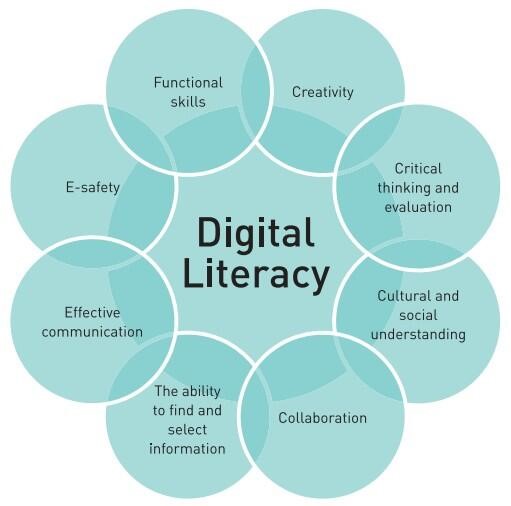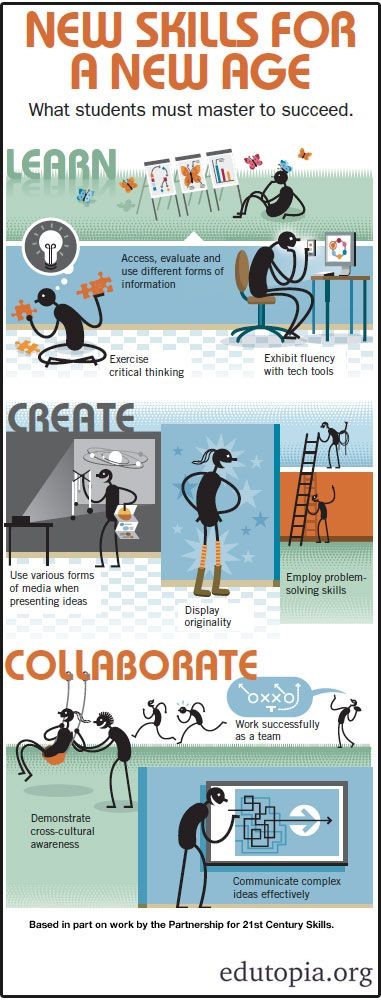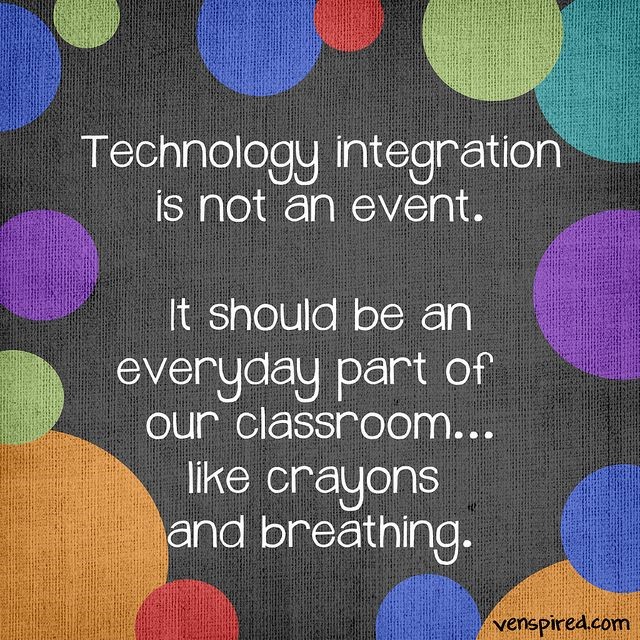In his book, The Global Achievement Gap, Tony Wagner, an expert at Harvard University Innovation Lab and who formerly worked as a high school teacher, principal, and university professor in teacher education, writes about the gap between what schools are teaching and testing and the new survival skills all students need to succeed as workers, learners and citizens in today’s global knowledge economy. While writing his book, Wagner interviewed business leaders about their expectations. I included some of their remarks here for you to check whether you are teaching these skills to your students:
“The idea that a company’s senior leaders have all the answers and can solve problems by themselves has gone completely by the wayside…The person who’s close to the work has to have strong analytical skills. You have to be rigorous: test your assumptions, don’t take things at face value. The challenge is this: How do you do things that haven’t been done before, where you have to rethink or think anew?”
—Ellen Kumata, Consultant to Fortune 200 Companies
“My greatest concern is young people’s lack of leadership skills. Kids just out of school have an amazing lack of preparedness in general leadership skills and collaborative skills. They lack the ability to influence.”
—Mike Summers, Vice President for Global Talent Management at Dell
“Teamwork is no longer just about working with others in your building. Technology has allowed for virtual teams. We have teams working on major infrastructure projects that are all over the country. On other projects, you’re working with people all around the world on solving a software problem. Every week they’re on a variety of conference calls; they’re doing Web casts; they’re doing net meetings.”
—Christie Pedra, CEO of Siemens
“Anyone who works at BOC Edwards today has to think, be flexible, change, and use a variety of tools to solve new problems. I’ve been here four years, and we’ve done fundamental reorganization every year because of changes in the business…I can guarantee the job I hire someone to do will change or may not exist in the future, so this is why adaptability and learning skills are more important than technical skills.”
—Clay Parker, President of Chemical Management Division of BOC Edwards
“For our production and crafts staff, we need self-directed people…who can find creative solutions to some very tough, challenging problems.”
—Mark Maddox, Human Resources Manager at Unilever Foods North America
“We are routinely surprised at the difficulty some young people have in communicating: verbal skills, written skills, presentation skills. They have difficulty being clear and concise; it’s hard for them to create focus, energy, and passion around the points they want to make. If you’re talking to an exec, the first thing you’ll get asked if you haven’t made it perfectly clear in the first 60 seconds of your presentation is, ‘What do you want me to take away from this meeting?’ They don’t know how to answer that question.”
—Mike Summers, Vice President for Global Talent Management at Dell
“There is so much information available that it is almost too much, and if people aren’t prepared to process the information effectively, it almost freezes them in their steps.”
—Mike Summers, Vice President for Global Talent Management at Dell
“Our old idea is that work is defined by employers and that employees have to do whatever the employer wants…but actually, you would like him to come up with an interpretation that you like—he’s adding something personal—a creative element.”
—Michael Jung, Senior Consultant at McKinsey and Company
In another book, Five Minds for the Future, psychologist, author, and Harvard professor Howard Gardner writes about the kinds of minds (the competencies which young people and the society need in the twenty first century) that will be critical to success in a 21st century landscape of accelerating change and information overload. According to Gardner, without these five minds we risk being overwhelmed by information, unable to succeed in the workplace, and incapable of the judgment needed to thrive both personally and professionally in today’s relentlessly changing world.
Both authors are trying to show us which skills are required to prepare our students for the challenges of today’s world in which cultures, economies, and people are connected. In line with their ideas, according to a report published by Pearson, these are the new skills the world is looking for:
 IMAGE SOURCE: Beyond the Learning Curve via PEARSON
IMAGE SOURCE: Beyond the Learning Curve via PEARSON
It is obvious that in addition to traditional literacy skills, more sophisticated literacy skills are required for our students to fully participate and function in our global community. As George Couros says, ‘If the world is asking for people to be innovative and to think differently, schools can no longer shape the students to think all the same.’ Instead, schools should be places where students learn to think critically and creatively about information and communication. Our students should be competent users of digital technologies to locate resources, process information, communicate ideas, and build cross-cultural collaborations. All this means a big shift in learning . Consequently, the roles of teachers and the way they teach should change greatly.
In his post, 14 Trends We Should Be Thinking About, Will Richardson writes about how the 14 trends in Mary Meeker ‘s 2015 report should be considered as eye openers for those of us thinking about the K-12 world of learning as they suggest that our curriculum and practice is out of date. The connected world has brought up a new culture of learning. We should embrace these new learning contexts in our work to prepare our students for their own learning journeys and update our curriculum accordingly. In the following three posts, I’ll try to show how we can integrate the three new literacies – digital, media, and global literacy – into our traditional literacy curriculum to create schools that work not only for us, teachers but for our students, too as Eric Sheninger says in his TEDx 2014 talk:
What do you think? Are you happy with your present curriculum or do you think it is worth going out of your comfort zone to create a different learning journey for your students? Please let me know.










